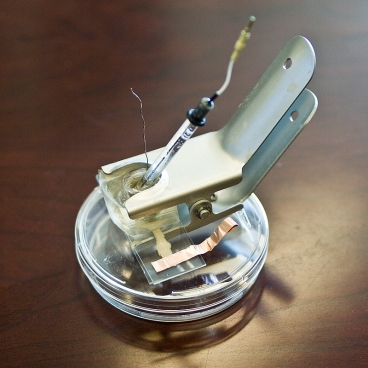Plants excel at a task that scientists and engineers have been trying to accomplish for decades: converting sunlight into cheap energy, reliably day after day, year after year. Now, several scientists at MIT have succeeded in mimicking a key aspect of this process.

One of the problems with utilizing sunlight is that the sun's rays can be destructive to many materials and cause the gradual discharge of systems designed for this very purpose. However, plants have developed an interesting strategy to deal with this issue: they frequently disassemble their light-receiving cells and reassemble them again and again, so that the basic structures responsible for capturing light energy are, in fact, completely new.
Michael Strano, professor of chemical engineering, has now succeeded in mimicking this process. His research team made a new series of self-organizing pods capable of converting sunlight into electricity; The separates can be quickly disassembled and reassembled again and again, simply by adding or removing additional solution. The research findings were published in the scientific journal Nature Chemistry.
The lead researcher states that the idea first occurred to him when he was reading material on plant biology. "I was deeply in awe of the way plant cells developed this very efficient repair mechanism," he says. On a summer day, "a leaf of a tree is able to recycle its proteins every forty-five minutes, even though it can be seen as a static photocell."
One of the scientist's long-term research goals was to find ways to imitate principles found in nature using nano-components. In the case of the molecules used in the photosynthesis process in plants, the active formation of oxygen, created by sunlight, causes the proteins to break down very precisely. As described by the lead researcher: "The oxygen breaks the bonds that keep the proteins together," but those proteins actually reorganize quickly to start the process. This action takes place inside tiny bodies called chloroplasts found in every plant cell - where photosynthesis takes place. the chloroplast (The entry in Wikipedia) is an "amazing machine", says the researcher. "They are excellent engines that consume carbon dioxide and use light to produce glucose (an energy-dense sugar)," a substance that provides energy for metabolism.
To mimic this process, the team of researchers prepared synthetic phospholipids in the form of disks; These discs provide structural support to other cells that respond to the light radiation, and are found in arrays called reaction centers, which release electrons in response to light particles hitting them. The discs, which contain the reaction centers, are in a solution where they organize themselves into carbon nanotubes - hollow carbon tubes of tiny thickness that are stronger than steel and conduct electricity better than copper. The nanotubes hold the phospholipid discs in an orderly array so that all the reaction centers are exposed to the sun's radiation at the same time, and they also serve as walls that collect and channel the stream of electrons released from the active particles.
The prepared system consists of seven different types of particles, including the nanotubes, the phospholipids, and the proteins that make up the reaction centers, which under suitable conditions organize themselves independently into a light-trapping structure that produces an electric current. The main researcher believes that this system holds the record for the complexity of a self-organizing system. When a surfactant, a substance similar to the chemicals used by BP to break up the oil that spilled into the Gulf of Mexico, is added to the mixture, the seven components separate and yield a soapy solution. In the next step, when the researchers remove the surface-active material by pushing the solution through a filter membrane, the compounds organize together again independently and perfectly into a renewed photocell.
"We are actually imitating the tricks that nature discovered millions of years ago, and especially the idea of reversibility - the ability to disassemble and reassemble," explains the lead researcher. The system was originally a purely theoretical idea, but then the researchers decided to build a prototype chamber to test it. They activated the cell in repeated cycles of disassembly and assembly for fourteen hours - without loss of cell efficiency.
The lead researcher explains that in designing innovative systems for generating electricity from sunlight, researchers often do not examine how the system changes over time. For conventional photovoltaic cells based on Zorn, there is indeed a low rate of degradation over time, but for many innovative systems being developed today - whether due to lower costs, increased efficiency/flexibility or other improved properties - degradation can be a very significant factor. "It is usually possible to notice after about sixty hours that the efficiency drops to only ten percent of the original value," says the researcher.
The efficiency of the separate reactions of these innovative molecular structures in the conversion of sunlight reaches forty percent - which is twice the efficiency percentages that exist today in the best commercial solar cells. Theoretically, the efficiency of the new buildings may be close to one hundred percent, the researcher claims. However, in the initial study the concentration of the structures in the solution was low, so the overall utilization of the device - the amount of electricity produced from a given surface - was very low. The researchers are now working to find ways to significantly increase the concentration.
